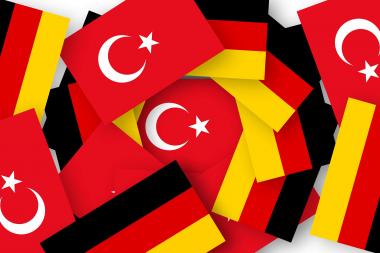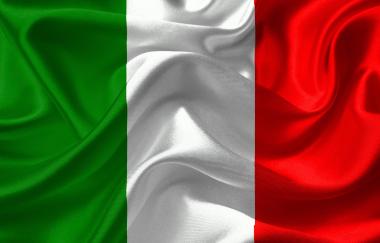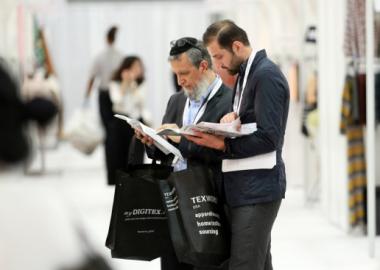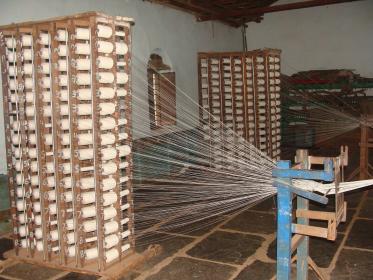Textiles and the environment: the role of design in Europe’s circular economy
From the perspective of European consumption, textiles have on average the fourth highest negative life cycle impact on the environment and climate change, after food, housing and mobility. A shift to a circular textile production and consumption system with longer use, and more reuse and recycling could reduce those impacts along with reductions in overall consumption. One important measure is circular design of textiles to improve product durability, repairability and recyclability and to ensure the uptake of secondary raw materials in new products.
Key messages
- In 2019, the EU textile and clothing sector had a turnover of EUR162 billion, employing over 1.5 million people across 160,000 companies. As was the case in many sectors, between 2019 and 2020, the COVID-19 crisis decreased turnover by 9% for textiles as a whole and by 17% for clothing.
- In 2020, textile consumption in Europe had on average the fourth highest impact on the environment and climate change from a global life cycle perspective. It was the consumption area with the third highest impact on water and land use, and the fifth highest in terms of raw material use and greenhouse gas emissions.
- To reduce the environmental impacts of textiles, a shift towards circular business models, including circular design, is crucial. This will need technical, social and business model innovation, as well as behavioural change and policy support.
- Circular design is an important enabler of the transition towards sustainable production and consumption of textiles through circular business models. The design phase plays a critical role in each of the four pathways to achieving a circular textile sector: longevity and durability; optimised resource use; collection and reuse; and recycling and material use.
Textiles are identified as a key value chain in the EU circular economy action plan and will be addressed in the forthcoming European Commission’s 2022 EU strategy for sustainable and circular textiles and EU sustainable products initiative. This briefing aims to improve our understanding of the environmental and climate impacts of textiles from a European perspective and to identify design principles and measures to increase circularity in textiles. It is underpinned by a report from the EEA’s European Topic Centre on Circular Economy and Resource Use available here.
1. Production, trade and consumption of textiles
Textiles is an important sector for the EU economy. In 2019, the EU textile and clothing sector had a turnover of EUR162 billion, employing over 1.5 million people in 160,000 companies. As was the case for many sectors, between 2019 and 2020, the COVID-19 health and economic crisis decreased turnover by 9% for textiles as a whole and by 17% for clothing (Euratex, 2021).
In 2020, 6.9 million tonnes of finished textile products were produced in the EU-27. EU production specialises in carpets, household textiles and other textiles (including non-woven textiles, technical and industrial textiles, ropes and fabrics). In addition to finished products, the EU produces intermediate products for textiles, such as fibres, yarns and fabrics (Köhler et al., 2021).
The textiles sector is labour intensive compared with others. Almost 13 million full-time equivalent workers were employed worldwide in the supply chain to produce the amount of clothing, textiles and footwear consumed in the EU-27 in 2020. This makes the textiles sector the third largest employer worldwide, after food and housing. Most production takes place in Asia, where low production costs come at the expense of workers’ health and safety.
Textiles are highly globalised, with Europe being a significant importer and exporter. In 2020, 8.7 million tonnes of finished textile products, with a value of EUR125 billion, were imported into the EU-27. Clothing accounts for 45% of imports in terms of volume, followed by household textiles, other textiles and footwear (Eurostat, 2021a). The EU imports mainly from China, Bangladesh and Turkey, and exports mainly to the United Kingdom, Switzerland and the United States (Euratex, 2020).
Consumption
European households consume large amounts of textile products. In 2019, as in 2018, Europeans spent on average EUR600 on clothing, EUR150 on footwear and EUR70 on household textiles (Köhler et al., 2021; Eurostat, 2021b).
The response to the COVID-19 pandemic, involving stay-at-home measures and the closure of companies and shops, decreased textile production and demand overall (Euratex, 2021). As a result, the consumption of clothing and footwear per person decreased in 2020, relative to 2019, while the consumption of household textiles slightly increased. Average textile consumption per person amounted to 6.0kg of clothing, 6.1kg of household textiles and 2.7kg of shoes in 2020 (see Figure 1).
Apart from this COVID-related drop in consumption in 2020, the estimated consumption of clothing and footwear stayed relatively constant over the last decade, with slight fluctuations between years (see Figure 2). Similarly, the consumption of household textiles was also relatively steady, with a slight increase over the decade.
When calculating the ‘estimated consumption’ based on production and trade data from 2020, and excluding industrial/technical textiles and carpets, total textile consumption is 15kg per person per year, consisting of, on average:
- 6.0kg of clothing
- 6.1kg of household textiles
- 2.7kg footwear.
For 2020, this amounts to a total consumption of 6.6 million tonnes of textile products in Europe. Textile consumption estimates are uncertain, as they vary by study, often using different scopes and calculation methods.
2. Environmental and climate impacts of textiles
The production and consumption of textiles has significant impacts on the environment and climate change. Environmental impacts in the production phase result from the cultivation and production of natural fibres such as cotton, hemp and linen (e.g. use of land and water, fertilisers and pesticides) and from the production of synthetic fibres such as polyester and elastane (e.g. energy use, chemical feedstock) (ETC/WMGE, 2021b). Manufacturing textiles requires large amounts of energy and water and uses a variety of chemicals across various production processes. Distribution and retail are responsible for transport emissions and packaging waste.
During use and maintenance — washing, drying and ironing — electricity, water and detergents are used. Chemicals and microfibres are also emitted into the waste water. Meanwhile, textiles contribute to significant amounts of textile waste. At the end of their life, textiles often end up in general waste and are incinerated or landfilled. When textile waste is collected separately, textiles are sorted and reused, recycled or disposed of, depending on their quality and material composition. In 2017, it was estimated that less than 1% of all textiles worldwide are recycled into new products (Ellen MacArthur Foundation, 2017).
To illustrate the magnitude of the impacts of textile consumption on raw material use, water and land use and greenhouse gas emissions compared with other consumption categories, we have updated our calculations of the life cycle environmental and climate impacts in the EU. We used input-output modelling based on data from the Exiobase database and Eurostat. In line with the reduced textile consumption level in 2020 because of the COVID-19 pandemic, the environmental impacts decreased from 2019 to 2020.
Raw material use
Large amounts of raw materials are used for textile production. To produce all clothing, footwear and household textiles purchased by EU households in 2020, an estimated 175 million tonnes of primary raw materials were used, amounting to 391kg per person. Roughly 40% of this is attributable to clothes, 30% to household textiles and 30% to footwear. This ranks textiles as the fifth highest consumption category in Europe in terms of primary raw material use (see Figure 3).
The raw materials used include all types of materials used in producing natural and synthetic fibres, such as fossil fuels, chemicals and fertilisers. It also includes all building materials, minerals and metals used in the construction of production facilities. Transport and retail of the textile products are included as well. Only 20% of these primary raw materials are produced or extracted in Europe, with the remainder extracted outside Europe. This shows the global nature of the textiles value chain and the high dependency of European consumption on imports. This implies that 80% of environmental impacts generated by Europe’s textile consumption takes place outside Europe. For example, cotton farming, fibre production and garment construction mostly take place in Asia (ETC/WMGE, 2019).
Water use
Producing and handling textiles requires large quantities of water. Water use distinguishes between ‘blue’ water (surface water or groundwater consumed or evaporated during irrigation, industry processes or household use) and ‘green’ water (rain water stored in the soil, typically used to grow crops) (Hoekstra et al., 2012).
To produce all clothing, footwear and household textiles purchased by EU households in 2020, about 4,000 million m³ of blue water were required, amounting to 9m³ per person, ranking textiles’ water consumption in third place, after food and recreation and culture (see Figure 4).
Additionally, about 20,000 million m³ of green water was used, mainly for producing cotton, which amounts to 44m³ per person. Blue water is used fairly equally in producing clothing (40%), footwear (30%) and household and other textiles (30%). Green water is mainly consumed in producing clothing (almost 50%) and household textiles (30%), of which cotton production consumes the most.
Water consumption for textiles consumed in Europe mostly takes place outside Europe. It is estimated that producing 1kg of cotton requires about 10m³ of water, typically outside Europe (Chapagain et al., 2006).
Land use
Producing textiles, in particular natural textiles, requires large amounts of land. The land used in the supply chain of textiles purchased by European households in 2020 is estimated at 180,000 km², or 400m² per person. Only 8% of the land used is in Europe. Over 90% of the land use impact occurs outside Europe, mostly related to (cotton) fibre production in China and India (ETC/WMGE, 2019). Animal-based fibres, such as wool, also have a significant land use impact (Lehmann et al., 2018). This makes textiles the sector with the third highest impact on land use, after food and housing (see Figure 5). Of this, 43% is attributable to clothes, 35% to footwear (including leather shoes, which have a high land use impact because of the need for cattle pasture) and 23% to household and other textiles.
Greenhouse gas emissions
The production and consumption of textiles generate greenhouse gas emissions, in particular from resource extraction, production, washing and drying, and waste incineration. In 2020, producing textile products consumed in the EU generated greenhouse gas emissions of 121 million tonnes carbon dioxide equivalent (CO2e) in total, or 270kg CO2e per person. This makes textiles the household consumption domain responsible for the fifth largest impact on climate change, after housing, food, transport and mobility, and recreation and culture (see Figure 6). Of this, 50% is attributable to clothes, 30% to household and other textiles, and 20% to footwear. While greenhouse gas emissions have a global effect, almost 75% are released outside Europe, mainly in the important textile-producing regions in Asia (ETC/WMGE, 2019).
About 80% of the total climate change impact of textiles occurs in the production phase. A further 3% occurs in distribution and retail, 14% in the use phase (washing, drying and ironing), and 3% during end of life (collection, sorting, recycling, incineration and disposal) (ECOS, 2021; Östlund et al., 2020).
Textiles made from natural fibres, such as cotton, generally have the lowest climate impact. Those made from synthetic fibres (especially nylon and acrylic) generally have a higher climate impact because of their fossil fuel origin and the energy consumed during production (ETC/WMGE, 2021b; Beton et al., 2014).
3. Design as an enabler of circular business models for textiles
To reduce the environmental and climate change impacts of textiles, shifting towards circular business models is crucial to save on raw materials, energy, water and land use, emissions and waste (ETC/WMGE, 2019). Implementing and scaling circular business models requires technical, social and business model innovation; as well as enablers from policy, consumption and education (EEA, 2021).
Circular design is an important component of circular business models for textiles. It can ensure higher quality, longer lifetimes, better use of materials, and better options for reuse and recycling. While it is important to enable the recycling and reuse of materials, life-extending strategies, such as design for durability, ease of reuse, repair and remanufacturing, should be prioritised. Preventing the use of hazardous chemicals and limiting toxic emissions and release of microplastics at all life cycle stages should be incorporated into product design.
Designing for circularity is the most recent development in design for sustainability. Expanding a technical and product-centric focus to a focus on large-scale system-level changes (considering both production and consumption systems) shows that this latest development requires many more disciplines than traditional engineering design. Product design as a component of a circular business model depends on consumer behaviour and policy to realise its potential and enable implementation. Figure 7 shows the linkages between the circular business model, product design, consumer behaviour and policy. All are needed to slow down and close the loop, making it circular.
European Environment Agency Recycling circular design circular economy Clothing industry water consumption
European Environment Agency
















































































